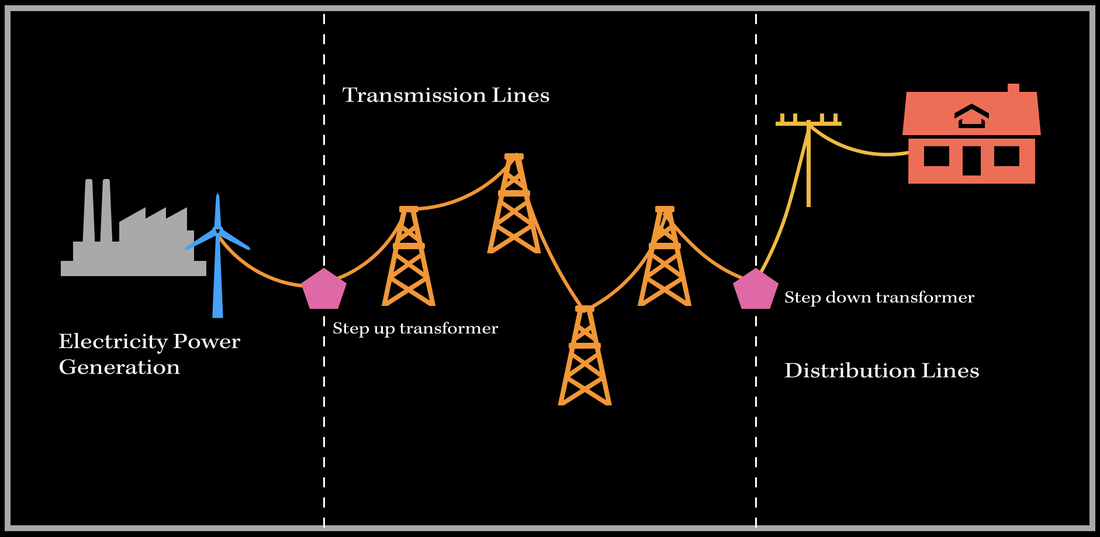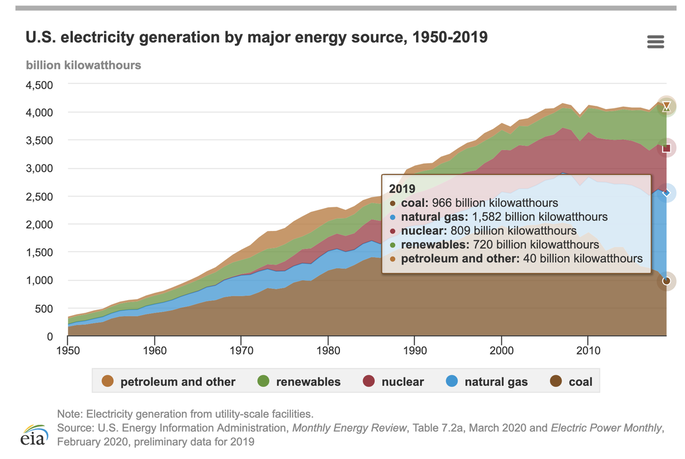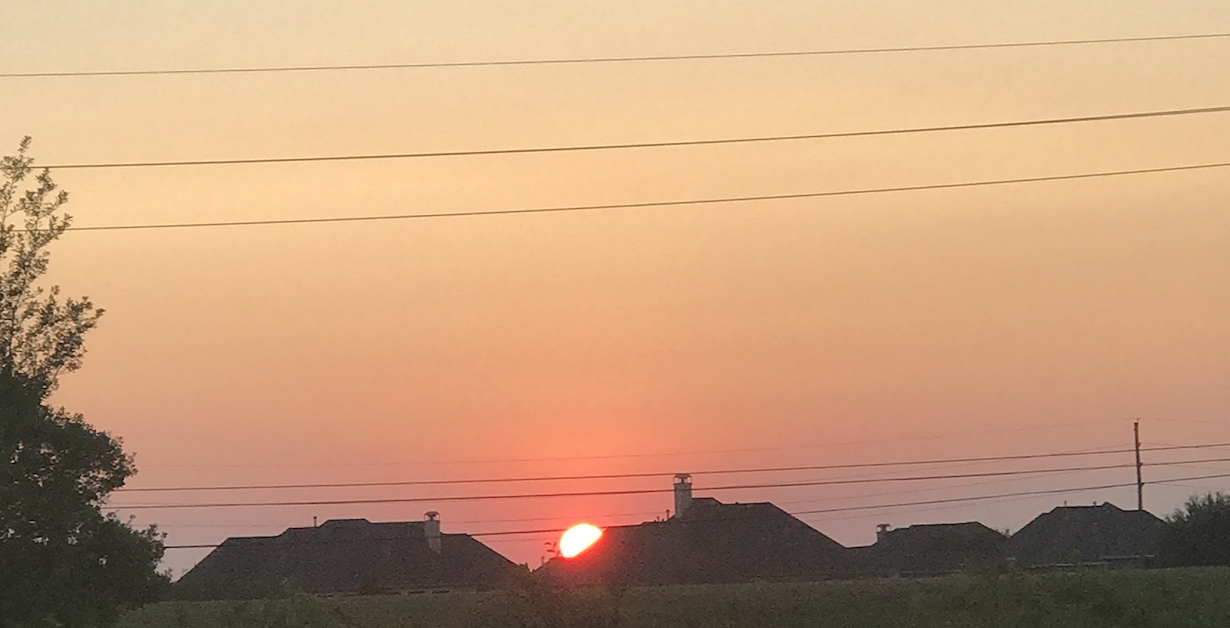|
I've always wondered as to how the power grid works, and distributes electric power to our homes and buildings for heating, lighting, cooking, and so much more! Power is an extremely important source that meets our needs for everyday tasks. Therefore, after lots of researching, I wanted to present some important processes and steps that occur in power distribution grid systems to better understand how the grid works in general! Lets go: Electric power is delivered to our homes via the power grid (aka electric grid). Well, what exactly does 'power grid' mean? The power grid is a complex system that supplies electricity from the power producers (generators) to homes, businesses, and buildings (the consumers). The system is comprised of stations, substations and transmission/distribution lines. The power grid is made up of three main components:
A simple representation of the power grid system. 1. Power GenerationIn order to supply and distribute power, we need to be able to generate it first. The power generation step uses different forms of energy sources to produce electricity! The first law of thermodynamics says "Energy cannot be created or destroyed. It can only be transformed or converted frome one source to another." Therefore, we need to transform one source of energy into electric energy to generate electrical power! One way to generate electricity is to use turbines and generators to convert kinetic energy to electrical energy. A turbine is a rotational device that uses a source's kinetic energy for rotational motion. A source is used to turn the turbine, which in turn rotates the coil of copper wires in a magnetic field. This is in the electric generator. From Michael Faraday's laws, if you move a coil of copper wire in a magentic field, an electric current is produced! The faster the coil of wire moves, the more electric energy is produced! This mechanical movement produces the electricity we need to distribute across hundreds and thousands of miles! Any source can be used to move the turbine; for instance, wind, gas, steam, or hydroelectric turbines exist to generate electricity. There are many different forms of electricity generation, from petroleum, nuclear, renewable, natural gas to coal! The following figure shows a statistic from the years of 1950-2019, and displays the number of kilowatthours produced changing over time. From the U.S. Energy Information Administration, https://www.eia.gov/energyexplained/electricity/electricity-in-the-us.php 2. Transmission LinesOnce the electricity is produced, its time to transmit the power to our homes. Before we get to that step, we need to ensure that the electrical energy loss is minimized as the electric current travels over long distances. The higher the current, the more energy loss occurs due to the heating in the wire. Therefore, we need some way to reduce the current, and at the same time, maintain the power. As per this equation, since power is constant, by increasing the voltage, the current reduces. Therefore, there needs to be some sort of mechanism to increase the voltage, therefore reducing the current. This is done by a step-up transformer. A step-up transformer increases the voltage, while a step-down transformer decreases the voltage. Once the step-up transformer has increased the voltage, the power is transmitted to different substations and distribution centers (electric facilities) via transmission lines. Transmission lines are used to carry and transmit the power over long distances. 3. Distribution Lines
4. Power to safely use at homeThe final step of this system are homes, buildings and businesses receiving the power safely at an appropriate voltage level for use. The electricity reaches our homes' by passing through the service panel, where it connects to all of the appliances and loads in the home! :) This is meant to be a quick and short intro on power grids. I know power is something we take for granted, and I think learning about how the system works to meet our needs is an extremely important thing! :) SourcesSome fascinating resources that helped me out during research!
1 Comment
2/28/2024 07:23:00 am
Cloud computing refers to the delivery of computing services, including storage, processing power, and software, over the internet. It offers businesses and individuals access to scalable and flexible resources without the need for on-premises infrastructure. Cloud computing providers maintain and manage the underlying hardware and software, enabling users to access computing resources on-demand and pay only for what they use. This technology revolutionizes IT infrastructure, allowing for increased efficiency, agility, and cost-effectiveness in deploying and managing digital services.
Reply
Leave a Reply. |
Archives
March 2021
Topics
All
|




 RSS Feed
RSS Feed
